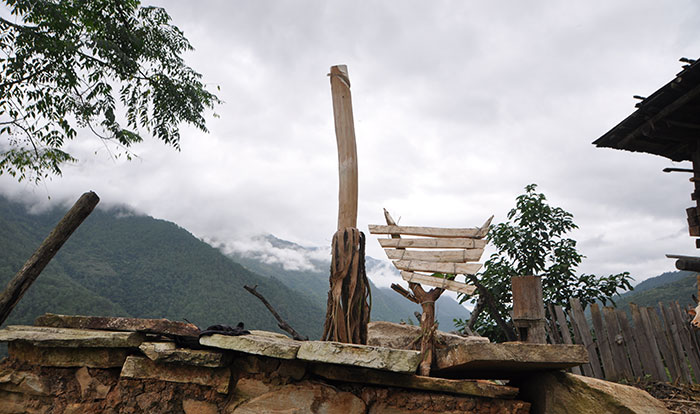Three-day Kharam festival in Chali and Tsakaling ends
Tshering Namgyal | Mongar
The celebration was subdued because of the Covid-19 pandemic where gathering is disallowed, but the people of Tsakaling and Chali gewogs, Mongar went ahead with the Kharam festival.
The Kharam festival is important and is more relevant this year as the festival, a three-day ritual, is observed to ward off evil forces and bad luck inflicting humans, crops and cattle.
The annual event takes place from the 27th to 29th days of the seventh month of the Bhutanese calendar. This year it was from September 14 to 16. The festival revolves around the Kharamshing, a wooden phallus carved on a wood.
The wooden phalluses are made from a local tree called Robtang shing. A few days before the festival, each household makes three kharamshings to ward off harmful influences.
Called as Sa Kharam, the first day of the three-day festival is dedicated to land and therefore, crop. The day begins with the erection of a kharamshing in front of the house to avert harmful influence or negative energy. No field works are carried out to avoid causing harm on the lives of the insects underneath.
Villagers erect kharamshing in their field to protect crops from pests and weeds, disaster and to ensure a bountiful harvest. An offering of rice, meat and alcohol besides fresh cereals and vegetables is made to the wooden phallus. After the ritual, they discard it at road junctions or crossroads as a gesture of offerings to the spiritual forces that they are not able to name.
The second day is dedicated to cattle. The day is marked by family members carrying the kharamshing with different types of fodder grasses and plants hung on it and marching towards the cattle sheds. Chanting prayers they go round the sheds. Villagers then throw ashes towards the cattle as a mark of washing away evils. This is followed by pretending to send the animals off to the Kurichhu river below, as they believe the river washes away all the bad luck of people, cattle and crops.
The kharamshing is then planted in the cowshed to ensure wealth in the form of livestock and also protect them from diseases and misfortune.
The final day or the mi kharam (for good health of the people) is marked with the serving of delicacies and drinks and exchange of greetings. After offering food, milk and alcohol to the kharamshing, the family members enjoy the festive food. These ritualized greetings are believed to protect those living inside the house and also avert quarrels among the family members. By the end of the day, the entire landscape of the villages is dotted with kharamshing.
Kharam is also an occasion for family members from far and wide, to relatives and neighbours to come together and indulge in eating good food and drinks.
Although the ritual was more relevant this year amid the Covid-19 pandemic, it was not as exciting as previous years. Mindful of the safety protocols, villagers could not gather to celebrate.
A Tashipokto villager, Tenzin Wangmo said that usually, more than her 30 family members usually gather at her house during the festival. “This year, we had only a few coming over,” she said adding that more than the gathering, the ritual was important.
Outdoor games like archery and khuru were also restricted with only a few men playing because of the restrictions on crowding.
The Kharam festival is also celebrated in Tshamang gewog in Mongar and Tsenkhar and Jarey gewogs of Lhuentse with different timing in some places.
Although the origins of the festival are unknown, it is believed to have evolved from a Bön ritual.
A Korshibang villager, Kado, 80, said the festival is an integral part of the village life. “We believe that nothing will happen to our crops after this ritual,” he said. “For generations we had been seeking help from the natural force to protect the little we have,” he said.


